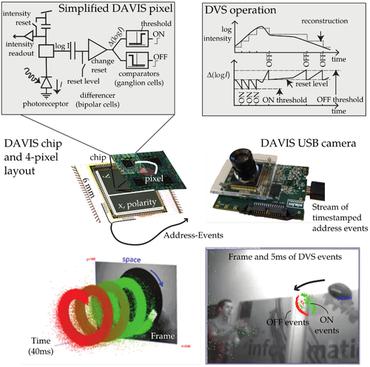Search Results for author: Michael Schmuker
Found 7 papers, 2 papers with code
Spike-time encoding of gas concentrations using neuromorphic analog sensory front-end
no code implementations • 11 Oct 2023 • Shavika Rastogi, Nik Dennler, Michael Schmuker, André van Schaik
We show that in the setting of controlled airflow-embedded gas injections, the time difference between the two generated pulses varies inversely with gas concentration, which is in agreement with the spike timing difference between tufted cells and mitral cells of the mammalian olfactory bulb.
Limitations in odour recognition and generalisation in a neuromorphic olfactory circuit
1 code implementation • 20 Sep 2023 • Nik Dennler, André van Schaik, Michael Schmuker
Neuromorphic computing is one of the few current approaches that have the potential to significantly reduce power consumption in Machine Learning and Artificial Intelligence.
Drift in a Popular Metal Oxide Sensor Dataset Reveals Limitations for Gas Classification Benchmarks
no code implementations • 19 Aug 2021 • Nik Dennler, Shavika Rastogi, Jordi Fonollosa, André van Schaik, Michael Schmuker
Metal oxide (MOx) electro-chemical gas sensors are a sensible choice for many applications, due to their tunable sensitivity, their space-efficiency and their low price.
Resolving fast gas transients with Metal-Oxide sensors
no code implementations • 5 Oct 2020 • Damien Drix, Michael Schmuker
Electronic olfaction can help detect and localise harmful gases and pollutants, but the turbulence of natural environment presents a particular challenge: odor encounters are intermittent, and an effective electronic nose must therefore be able to resolve short odor pulses.
Low-Power Neuromorphic Hardware for Signal Processing Applications
no code implementations • 11 Jan 2019 • Bipin Rajendran, Abu Sebastian, Michael Schmuker, Narayan Srinivasa, Evangelos Eleftheriou
In this paper, we review some of the architectural and system level design aspects involved in developing a new class of brain-inspired information processing engines that mimic the time-based information encoding and processing aspects of the brain.
Feed-forward and noise-tolerant detection of feature homogeneity in spiking networks with a latency code
no code implementations • 11 Jun 2018 • Michael Schmuker, Rüdiger Kupper, Ad Aertsen, Thomas Wachtler, Marc-Oliver Gewaltig
In studies of the visual system as well as in computer vision, the focus is often on contrast edges.
Exploiting plume structure to decode gas source distance using metal-oxide gas sensors
2 code implementations • 3 Feb 2016 • Michael Schmuker, Viktor Bahr, Ramón Huerta
If an estimation of the gas concentration at the source is available, source proximity can be estimated from the time-averaged gas concentration at the sensing site.
Neurons and Cognition Data Analysis, Statistics and Probability Other Statistics


